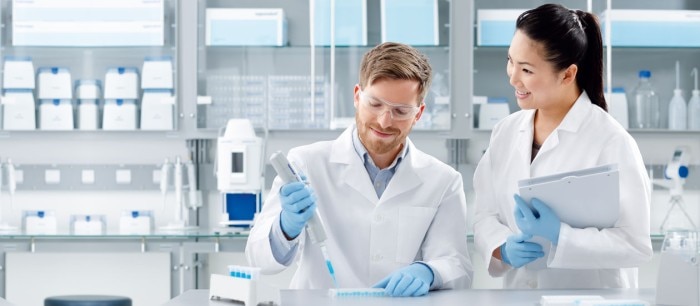MENU
BE | EUR
-
-
-
-
- Forum Labo 2025
- Advanced Therapies Week (ATW) 2025
- SLAS Europe 2025
- Bioprocessing Summit Europe 2025
- Medlab Middle East 2025
- SLAS International 2025
- Biologics World Nordics 2025
- ASIA LABEX: The Lab Show 2025
- BioProcess International Europe 2025
- ISEV 2025
- Future Labs Live 2025
- DataHow Symposium 2025
- Cell 2025
- LabDays 2025
- ASIA LABEX: The Lab Show 2025
- Stem Cell Community Day 2025
- Nordic Life Science Days 2025
-
-
-
-
- Forum Labo 2025
- Advanced Therapies Week (ATW) 2025
- SLAS Europe 2025
- Bioprocessing Summit Europe 2025
- Medlab Middle East 2025
- SLAS International 2025
- Biologics World Nordics 2025
- ASIA LABEX: The Lab Show 2025
- BioProcess International Europe 2025
- ISEV 2025
- Future Labs Live 2025
- DataHow Symposium 2025
- Cell 2025
- LabDays 2025
- ASIA LABEX: The Lab Show 2025
- Stem Cell Community Day 2025
- Nordic Life Science Days 2025
BE | EUR
-
- Benchtop Centrifuges
- Floor-Standing Centrifuges
- Refrigerated Centrifuges
- Microcentrifuges
- Multipurpose Centrifuges
- High-Speed Centrifuges
- Ultracentrifuges
- Concentrator
- IVD Products
- High-Speed and Ultracentrifuge Consumables
- Centrifuge Tubes
- Centrifuge Plates
- Device Management Software
- Sample and Information Management
-
- All Pipettes, Dispensers & Automated Liquid Handlers
- Mechanical Pipettes
- Electronic Pipettes
- Multi-Channel Pipettes
- Positive Displacement Pipettes & Dispensers
- Automated Pipetting
- Bottle-Top Dispensers
- Pipette Controllers
- Pipette Tips
- Automation Consumables
- Dispenser & Pipette Accessories
- Automation Accessories
- Dispenser & Pipette Services
Sorry, we couldn't find anything on our website containing your search term.

When You Think about Pipetting Liquids, Think Twice
Lab Academy
- Cell Biology
- Lab Routine
- Digital Lab Solutions
- Pipettes
- Essay
Starting an experiment means asking many questions. Which material is needed? Which samples are used? Which conditions are necessary, e.g., growth? How long is the whole application? Do I have to check on the experiment at weekends, or at night? One question is often forgotten, but is of no less importance. Which liquids are used during the application and how are they pipetted?
Since pipetting liquids is daily business and if the liquid aspirated is also dispensed, we usually don’t spend too much time and effort on this topic. But it makes sense to think twice about the liquid and pipette tool used.
Liquids can be categorized in five main categories: aqueous, viscous (incl. detergents), volatile, dense and infectious or toxic. Improper handling of these liquid categories has a tremendous influence on the pipetting result. While pipetting aqueous solutions like most buffers is fairly simple and mainly done with classic air-cushion pipettes, difficulties may arise when pipetting volatile liquids like acetone. Volatile liquids have a high vapor pressure causing evaporation into the air-cushion and thereby droplet formation. In the end, this means sample or reagent loss without the correct pipetting technique. When pipetting volatile liquids, pre-wetting of the pipette tip (repeated aspiration and dispensing cycles to humidify the air inside the tip) is mandatory to increase pipetting accuracy. A completely different liquid category includes viscous liquids such as glycerol. These have a very slow flow behavior due to a high inner friction of molecules leading to air bubble aspiration, residues in the tip and sample or reagent loss. A special pipetting technique called reverse pipetting is recommended when using classic air-cushion pipettes. But even better is usage of a different pipetting tool, a positive displacement device with a syringe-like tip working without an air cushion between the sample and the piston inside the tip. Liquid can be aspirated faster and easier with these tools. When dispensing a viscous liquid, the complete volume can be dispensed without residues in the tip.
So, thinking about the liquid before starting an experiment can simplify and improve your workflow and results. An overview of the liquid categories, their challenges and recommendations on proper pipetting techniques and pipetting tools are shown on our poster. You may download the poster to have a printable version for your lab.
Liquids can be categorized in five main categories: aqueous, viscous (incl. detergents), volatile, dense and infectious or toxic. Improper handling of these liquid categories has a tremendous influence on the pipetting result. While pipetting aqueous solutions like most buffers is fairly simple and mainly done with classic air-cushion pipettes, difficulties may arise when pipetting volatile liquids like acetone. Volatile liquids have a high vapor pressure causing evaporation into the air-cushion and thereby droplet formation. In the end, this means sample or reagent loss without the correct pipetting technique. When pipetting volatile liquids, pre-wetting of the pipette tip (repeated aspiration and dispensing cycles to humidify the air inside the tip) is mandatory to increase pipetting accuracy. A completely different liquid category includes viscous liquids such as glycerol. These have a very slow flow behavior due to a high inner friction of molecules leading to air bubble aspiration, residues in the tip and sample or reagent loss. A special pipetting technique called reverse pipetting is recommended when using classic air-cushion pipettes. But even better is usage of a different pipetting tool, a positive displacement device with a syringe-like tip working without an air cushion between the sample and the piston inside the tip. Liquid can be aspirated faster and easier with these tools. When dispensing a viscous liquid, the complete volume can be dispensed without residues in the tip.
So, thinking about the liquid before starting an experiment can simplify and improve your workflow and results. An overview of the liquid categories, their challenges and recommendations on proper pipetting techniques and pipetting tools are shown on our poster. You may download the poster to have a printable version for your lab.
Read more
Read less
Related Document
- PDF Poster: Master your challenging liquids
Read more
Read less
